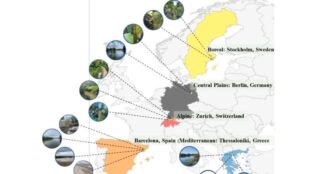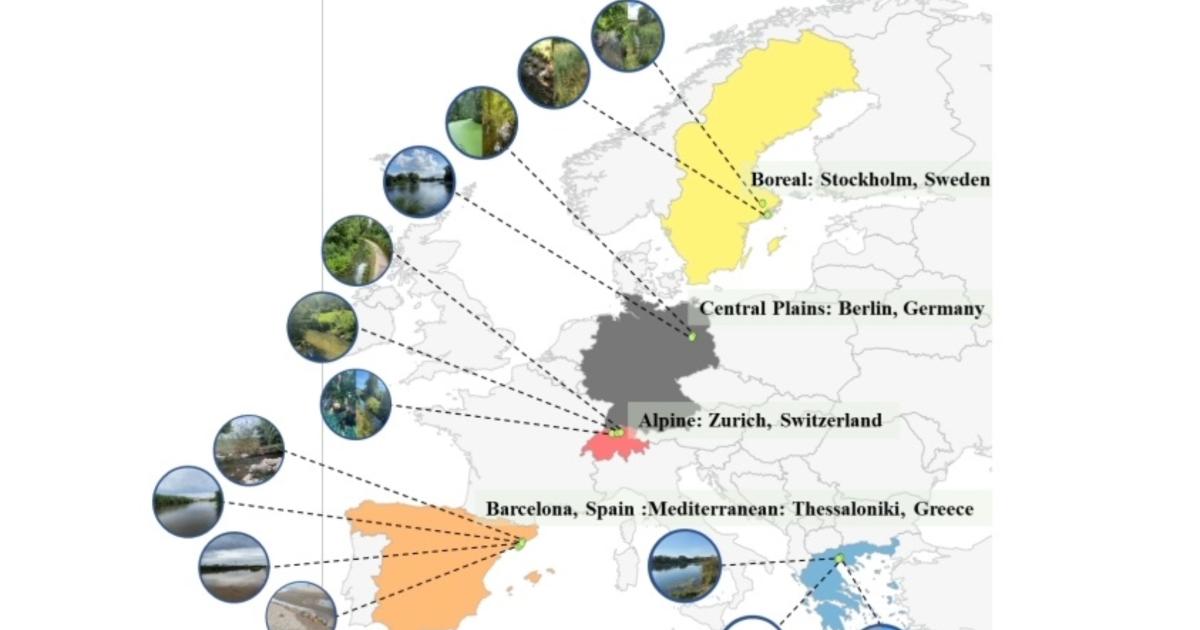Biodegradation is the process by which a compound is broken down by micro-organisms in the environment and is an important factor in the level and reversibility of contamination. Under EU REACH Regulation (Registration, Evaluation, Authorisation and Restriction of Chemicals), the evaluation of the biodegradation of a chemical substance is necessary to determine its environmental impact and whether it should be considered “persistent”.
These new findings on the variation in biodegradation rates present challenges to the use of this measure to assess chemical persistence, suggesting that tests may have to be repeated at multiple sites to gain an accurate indication of biodegradability.
REACH requires manufacturers and importers of chemicals above a certain volume to register their chemicals. As part of this they must measure biodegradability, but this is one of the largest sources of uncertainty in the assessment of chemical exposure. This new study sought to assess the degree of spatial variability in biodegradation rates across European rivers. A high degree of variability in biodegradation affects how representative the measurements are and how accurately researchers can extrapolate measurements for larger scale evaluations of chemical persistence.
There are a number of standardised biodegradation tests. REACH encourages a tiered approach where initial screening tests can be followed by more detailed studies if necessary to fully evaluate a chemical’s biodegradation potential. OECD 309 is the primary test for higher tier assessment of persistence and the study used a modified version of the OECD 309 test which assesses the time course of biodegradation of chemicals at a low concentration in natural water.
Researchers conducted tests of biodegradation on 97 compounds in 18 freshwater river segments in five countries: Spain, Greece, Germany, Sweden and Switzerland. Freshwater is considered a priority in REACH for assessment of chemical resistance.
Tests were done on surface water and sediment on a range of compounds from multiple classes of chemicals such as agrochemicals, pharmaceuticals, cosmetics, food additives, and industrial chemicals. The study also assessed the influence of environmental factors on biodegradation by measuring temperature, water pH, dissolved oxygen, total organic carbon, particle size and electrical conductivity.
Results showed that 95 out of the 97 compounds were biodegraded in at least one river segment while the biodegradation rates of the remaining two compounds were not significantly different from zero in all river segments. The compounds that had not significantly biodegraded were- C12 Isethionate (used in shampoos, shower gels and liquid soaps), and hydrochlorothiazide (a diuretic medicine). Variation was evaluated using ‘standard deviation’ of the logarithm of the biodegradation rate which assesses the degree to which the data is spread out from the average. The median value of this parameter for all chemicals was 0.46 which indicates that nearly all (95%) of the measurements for biodegradation rate fall within a factor of 8 of the mean.
Further analysis showed that both regional and local differences contributed to spatial variability and that the environmental factors of total organic carbon, longitude and clay content contributed to explaining variability in 18 river segments. However, currently there is no clear and direct link between these geographical and environmental properties and biodegradation rates. Further research could aim to improve the understanding of the drivers of spatial variability, particularly connecting data from molecular microbiology with the biodegradation rates of chemicals.
To further understand any patterns in the biodegradation rates of groups of chemicals, the study classified compounds according to whether the biodegradation was faster or slower than the average rate across all compounds. Many of those classified as ‘fast’ such as bezafibrate and valsartan, had comparatively low spatial variability whereas those classified as slowly biodegradable compounds tended to have large spatial variability. The researchers suggest that the compounds that biodegrade quickly and show less spatial variation could be tested at one site but those that biodegrade slowly may need to be tested multiple times.
Although the spatial variability was considerable, the researchers note that it might not be considered high for certain applications such as the modelling of exposure to chemicals (where there is comparable uncertainty in other parameters such as regional-scale emission rates). However, in other applications such as comparing test results against regulatory thresholds, the observed spatial variability could present serious challenges and would require tests from multiple and diverse sites to limit the uncertainty to a satisfactory level.
Researchers proposed two possible strategies to help overcome these challenges and elucidate the drivers of spatial variability. For example, particle size distribution, microbial biomass and species composition were linked to the rate of biodegradation in samples. Total organic carbon, meanwhile. was significantly correlated with overall biodegradation rates, therefore may serve as a surrogate measure for active microbial biomass, predicting spatial variability. Using such measures could enable better prioritisation of sites for further testing. Secondly, as the study showed that compounds that biodegrade quickly usually have low spatial variability, these chemicals could be tested at one site, while those that biodegrade slowly (and are closer to being defined as persistent), should be tested at more sites.
The study is confined to freshwater rivers and the researchers recommend that similar analyses should be conducted in wetlands, brackish waters, lakes and oceans.
Reference:
Tian, R., Posselt, M., Fenner, K. and McLachlan, M.S. (2024) Variability of Biodegradation Rates of Commercial Chemicals in Rivers in Different Regions of Europe. Environmental Science & Technology 2024 58 (45), 20201-20210. DOI: 10.1021/acs.est.4c07410
To cite this article/service:
“Science for Environment Policy”: European Commission DG Environment News Alert Service, edited by SCU, The University of the West of England, Bristol.
Notes on content:
The contents and views included in Science for Environment Policy are based on independent, peer reviewed research and do not necessarily reflect the position of the European Commission. Please note that this article is a summary of only one study. Other studies may come to other conclusions.












